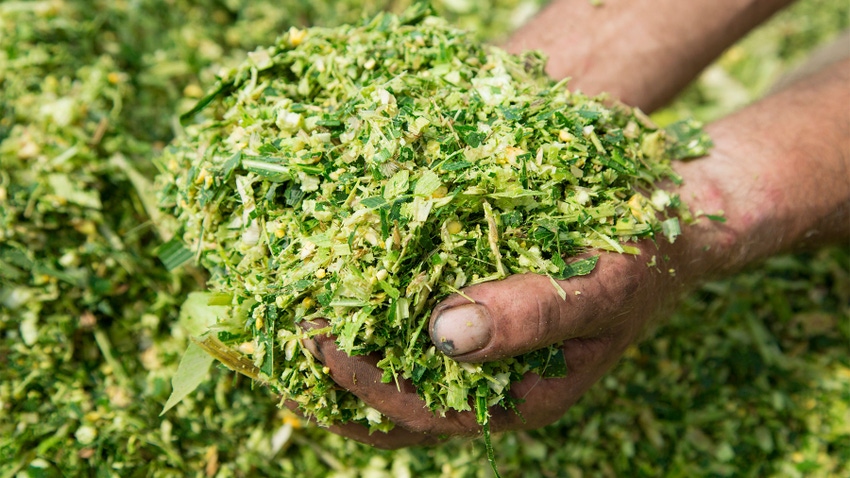
Still haven’t ordered corn silage for your dairy? Take a look at recent corn silage hybrid trials run by Penn State, and trials run jointly by the University of Vermont and Cornell.
The New York and Vermont trials were done across three sites in New York and at Borderview Farm in Alburgh, Vt. The hybrid relative maturity (RM) groupings were revised to account for entry trends and participant feedback.
“We shifted our RM groups slightly to respond to entry patterns,” says Joe Lawrence, forage systems specialist with Cornell Pro-Dairy. “The old grouping was 80- to 95-day and 96- to 110-day. Over the years, we saw very few entries below 85-day, so we implemented a new grouping for 2023, with the new grouping being 85- to 98-day, and 99- to 110-day.”
There were 75 entries from 17 seed brands.
“Entries, both number of brands participating and total hybrids, trended up slightly this year after a bit of a dip in 2021 and 2022,” Lawrence says.
“We received a grant from the New York Corn Growers to measure soil health at each location in an effort to characterize soil health differences between our locations with a row crop history and those with a dairy crop-manure history. This work is ongoing; no results summarized yet,” he adds.
Early RM results
The Oakfield, N.Y., site averaged 31.8 tons an acre at 35% DM, ranging between 27.9 tons and 37.6 tons an acre. Crude protein averaged 8.3%, ranging from 7.4% to 9.7%.
The Alburgh, Vt., site averaged 25.2 tons an acre, ranging from 21.1 tons to 30.4 tons an acre. Crude protein averaged 7.4%, ranging from 6.7% to 8.1%.
Late RM results
The Alburgh site averaged 24.2 tons an acre, ranging from 19.6 tons to 27.2 tons an acre. Crude protein averaged 7.1%, ranging from 6.6% to 7.9%.
The Madrid, N.Y., site averaged 34.5 tons an acre, ranging from 29.0 tons to 38.7 tons an acre. Crude protein averaged 7.0%, ranging from 6.3% to 7.7%.
The site in Aurora, N.Y., averaged 25 tons an acre, ranging from 21.1 tons to 29.1 tons an acre. Crude protein averaged 6.5%, ranging from 6.0% to 7.4%.
“Our western New York location [Oakfield] performed very well on approximately 13 inches of rain,” Lawrence says. “Alburgh, Vt., was notably the wettest location. However, the corn performed relatively well. Willsboro also ended up being fairly wet, though the total precipitation was not as high as Alburgh.
“Despite the lower total rainfall, the timing of the rain led to poor results. It started out very dry, which resulted in uneven germination, and then it turned very wet, which further impacted plant development ultimately causing us to abandon the location [Willsboro].
“We continue to be very interested in the patterns across locations and the overall crop performance [yield, fiber digestibility, ear development] based on the growing environment at a given location. We see very competitive genetics entered from all the participating brands; the differences between locations continue to be more pronounced than the differences between different genetics at the same location,” Lawrence adds.
Pennsylvania results
Penn State’s trial evaluated corn silage varieties submitted by dozens of companies — and split the results based on short-season, midseason and late-season groups.
The short-season trial evaluated 20 varieties on farms in Bradford, Centre and Clinton counties. The midseason trial evaluated 36 varieties in Blair, Centre and Juniata counties. The late-season trial in Chester, Juniata and Lancaster counties evaluated 35 varieties.
The 91- to 97-day RM yield average was 36.9 tons an acre, ranging from 35.1 to 39.5 tons an acre. Crude protein averaged 7.7%, ranging from 7.3% to 8.0%. The 98- to 103-day RM average yield was 36.4 tons an acre, ranging from 33.1 to 43.8 tons an acre. Crude protein averaged 7.6%, ranging from 7.2% to 8.1%.
The 99- to 105-day RM trial averaged 37.1 tons an acre, ranging from 34.3 tons to 41.3 tons an acre. Crude protein averaged 7.5%, ranging from 7.0% to 8.1%. The 106- to 110-day RM average yield was 34.8 tons an acre, ranging from 24.6 to 36.1 tons an acre. Protein averaged 7.5%, ranging from 7.0% to 8.2%.
The 111- to 114-day RM yield average was 35.8 tons an acre, ranging from 34.9 to 38.0 tons an acre. Protein averaged 7.7%, ranging from 7.2% to 8.0%. The 115- to 118-day RM yield averaged was 35.6 tons an acre, ranging from 32.6 to 38.2 tons an acre. Protein averaged 7.7% and ranged from 7.3% to 8.0%.
Advice for buying
University trials are beneficial because they are designed to provide nonbiased data.
The summary in Cornell and Vermont’s evaluation programs states that growers often use two different approaches when evaluating trial data. The first is studying hybrid performance in an environment close to the growing conditions on a farm in a given year, but this approach is discouraged.
Instead, the second approach, looking for hybrids that perform consistently above average across trial locations, is considered more reliable as it will reflect more variable growing conditions that a grower could see over time.
“This information should not be used on its own but adds value when used in conjunction with location-specific data,” according to the summary.
Read more about:
Corn SilageAbout the Author(s)
You May Also Like






